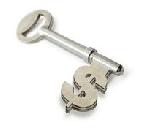
 |
|
| Financial Terms | |
| Size |
|
Information about financial, finance, business, accounting, payroll, inventory, investment, money, inventory control, stock trading, financial advisor, tax advisor, credit.
Main Page: accounting, payroll, inventory, investment, inventory control, stock trading, business, financial advisor, |
Definition of Size
SizeLarge in size, as in the size of an offering, the size of an order, or the size of a trade. size is relative from
Related Terms:log size modelAbrams’ model to calculate discount rates as a function of the logarithm of the value of the firm. common-size balance sheetBalance sheet that presents items as a percentage of total assets. common-size income statementIncome statement that presents items as a percentage of revenues. American Stock Exchange (AMEX)The second-largest stock exchange in the United States. It trades Bottom-up equity management styleA management style that de-emphasizes the significance of economic Commodities Exchange Center (CEC)The location of five New York futures exchanges: Commodity Common-base-year analysisThe representing of accounting information over multiple years as percentages  Import-substitution development strategyA development strategy followed by many Latin American Jumbo loanLoans of $1 billion or more. Or, loans that exceed the statutory size limit eligible for purchase or Managerial decisionsDecisions concerning the operation of the firm, such as the choice of firm size, firm Market capitalizationThe total dollar value of all outstanding shares. Computed as shares times current Profitability ratiosRatios that focus on the profitability of the firm. Profit margins measure performance Real marketThe bid and offer prices at which a dealer could do "size." Quotes in the brokers market may Value-based managementA variety of approaches that emphasize increasing shareholder value as the primary goal of every business. book value and book value per shareGenerally speaking, these terms capital expendituresRefers to investments by a business in long-term  discounted cash flow (DCF)Refers to a capital investment analysis technique AnnuityA series of payments or deposits of equal size spaced evenly over Fixed overheadThat portion of total overhead costs which remains constant in size MaterialityThe proportional size of a financial misstatement. It can be construed as economic order quantityOrder size that minimizes total inventory costs. Defined Contribution PlanA qualified retirement plan under which the employer MaterialityA characterization of the magnitude of a financial statement item's effect on a Maximum inventoryAn inventory item’s budgeted maximum inventory level, Standard containersCommon-sized containers that are used to efficiently move, Related to : financial, finance, business, accounting, payroll, inventory, investment, money, inventory control, stock trading, financial advisor, tax advisor, credit. |